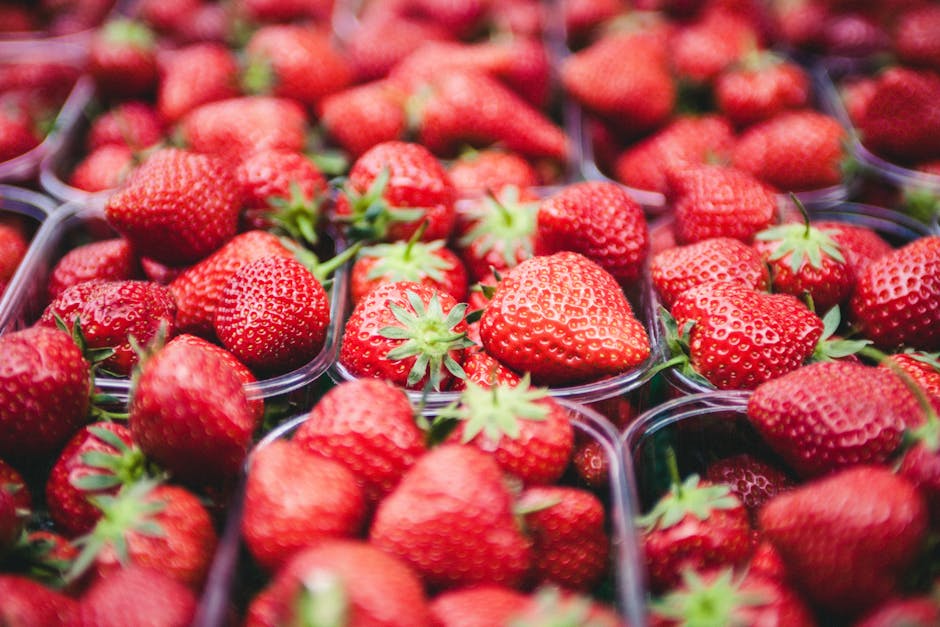Strawberries are incredibly rewarding to grow at home – who doesn’t love sweet, home-grown fruits straight from the pot to the plate? Thousands of gardening enthusiasts have made room on their patios, balconies, and window sills for a pot of these magical red berries, and there’s no reason why you can’t join in as well. In this article, we’ll dive into seven essential tips for successfully growing thriving strawberries in containers.
Choosing the Right Strawberry Plants for Containers
First thing’s first: picking the strawberry plant that’s meant to grow in the confines of a pot. Varieties like ‘Earliglow’, ‘Evrugaria’, and ‘Ozark Beauty’ are particularly well-suited to container growth, with their compact size and bountiful fruit production. They’re also hardy enough to adapt to a wide range of ambient temperatures, making them fit for any location.
Checklist:
Pro Tip: Plan your plant choices and container layout to have a steady supply of fresh strawberries throughout the growing season!
Guidelines on Selecting the Perfect Pot
The pot plays a significant role in the development of your strawberry plants. The container’s material can affect the soil’s moisture and temperature levels, with plastic pots typically retaining more warmth and drying out less quickly than clay or ceramic options. But whatever your material choice, make sure the pot is at least 10 inches deep and has ample drainage to prevent waterlogged soil – a prime breeding ground for root diseases.
Comparison:
| Material | Pros | Cons |
|---|---|---|
| Plastic | Lightweight, Retains moisture & warmth | Can degrade over time |
| Ceramic | Attractive, Stable in wind | Heavy, May crack in freeze/thaw cycles |
| Clay/Terracotta | Classic look, Breathable | Dries out quickly, Fragile |
Best Practice: Position your pot in a sunny, warm location and opt for one that’s light-colored to reflect heat away from the roots.
The Art of Planting Strawberries in Containers
As with most plants, strawberries require a specific planting technique to ensure robust growth. It all starts with a quality potting mix – choose one with peat moss or perlite for moisture retention. Place your plants, careful not to bury the crown, which can lead to diseases.
Checklist:
Pro Tip: The crown is the part of the plant where the stem and roots meet – it should always remain above the soil level, as burying it can lead to diseases like crown rot.
*To be continued…*
Mastering the Aspect of Watering Container-Grown Strawberries
All plants need water to thrive; strawberries grown in containers are no exception. However, strawberries can be thirsty plants, especially during the fruiting season. On hot days, you may need to water them twice a day, especially if your pot is located in full sun.
Best Practice: Water your strawberries in the early morning or late evening, and always water at the base of the plant – not from above.
Pro Tip: Mulching your potted strawberries with straw or wood chips can help to conserve soil moisture, prevent weeds, and keep the fruit clean.
Feeding Strawberries for Strong Growth and Abundant Fruit
Strawberries, like all fruiting plants, need more than just water to grow and produce fruit. A healthy dose of nutrients is necessary for their strong growth and abundant berry production.
Comparison:
| Type of Fertilizer | Pros | Cons |
|---|---|---|
| Organic | Naturally sourced, Slow-release, Improves soil structure | Costlier |
| Chemical | Quick-action, Economical | Can harm soil life and environment |
Pro Tip: Feed your strawberries with a balanced, slow-release fertilizer once every 4-6 weeks during growing season for optimal fruit production.
Tackling Pests and Disease Problems in Container Strawberries
Unfortunately, growing strawberries in containers does not make them immune to pests and diseases. Common threats can include aphids, verticillium wilt, and red stele.
Checklist:
Best Practice: Regular monitoring, rotation, and use of pest-deterrent plants can help prevent and manage pests and diseases.
Harvesting and Post-Harvest Care of Strawberries in Containers
The moment of glory – ripe strawberries ready for plucking! Harvest strawberries in the morning, when they are coolest, by gently twisting them off the stalk.
Best Practice: Ripe strawberries are plump, completely red, and come off the stem without too much effort.
Pro Tip: After harvesting, trim the plant back to about 3 inches tall, allowing it to conserve energy for the next fruiting.
By following these steps, you will be able to grow and enjoy your own homegrown strawberries, right from the pot to your plate. And trust us, nothing tastes as good as strawberries you’ve grown yourself – so grab a pot and some strawberry plants, and let’s get growing!
Key Takeaway:
- Picking the right strawberry variety and size of pot are essential starting points in successfully growing strawberries in containers.
- Proper planting, regular watering, and balanced feeding all contribute to a thriving strawberry plant with abundant yield.
- Vigilance in managing pests and diseases, and being mindful about post-harvest care ensures the good health and productivity of strawberries in the long run.
Remember, the joy of gardening comes with each step you take to nurture and grow your plants. Embrace the journey and remember that patience, practice, and love for your plants reap the sweetest reward. Don’t forget to share the wisdom you have learned in this article, and explore more exciting posts on our website.
FAQs
Q: Can I plant strawberries from the seeds of fruits I bought from the grocery?
A: Yes, you can. However, remember that germinating and growing strawberries from seeds take more effort and time compared to planting its crowns or runners.
Q: Can strawberries thrive in partial shade?
A: Strawberries prefer full sun but they can also tolerate partial shade. However, expect that berries grown in less sun may be smaller and less sweet.
Q: What is the average lifespan of a strawberry plant in a pot?
A: When properly cared for, most strawberry plants can stay productive for around three to five years. After that, they may start to produce less fruit.
Q: Do strawberries regrow every year?
A: Yes, strawberries are perennials which means they grow back every year. After the last harvest of the season, proper post-harvest care could give you another batch of fruiting the following year.
Q: How do I overwinter my potted strawberries?
A: If your region experiences freezing winter, consider moving your pot indoor or in a greenhouse. Provide enough light, limit watering, and maintain a cool temperature to help the plant survive the winter.
We hope this information sparked your interest in growing your own strawberries in containers. Enjoy your home-grown juicy and sweet berries and keep checking our website for more gardening tips!






